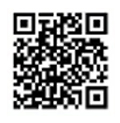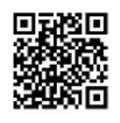目的探讨经验性回避以及反刍思维在颅脑损伤患者自我隐瞒与创伤后应激障碍间的链式中介效应。方法选取2017年1月至2018年6月本院神经外科收治的颅脑损伤患者285例为研究对象,采用基本情况问卷、中文简版经验性回避量表(BEAQ-C)、反刍思维量表(RRS)、自我隐瞒量表(SCS)以及创伤后应激障碍评测表(PCL-5)对患者进行调查测评和分析。结果颅脑损伤患者的BEAQ-C量表平均得分为(98.45±16.24)分、RBS量表平均得分为(64.57±8.61)分、SCS量表平均得分为(37.29±5.45)分、PCL-5量表平均得分为(60.74±6.23)分。颅脑损伤患者的SCS得分与PCL-5得分呈正相关(r=0.468,P<0.05)。颅脑损伤患者的经验性回避、反刍思维在其自我隐瞒与创伤后应激障碍中有中介效应作用,经验性回避的间接中介效应为0.16,占总效应的18.39%;反刍思维的间接中介效应为0.15,占总效应的17.24%;经验性回避和反刍思维的链式中介效应为0.08,占总效应的9.20%。结论经验性回避以及反刍思维是颅脑损伤患者自我隐瞒和创伤后应激障碍的中介变量,均能促进患者自我隐瞒,加重创伤后应激障碍。
当前位置:首页 / 经验性回避、反刍思维在颅脑损伤患者自我隐瞒与创伤后应激障碍间的中介效应分析
论著
|
更新时间:2020-09-03
|
经验性回避、反刍思维在颅脑损伤患者自我隐瞒与创伤后应激障碍间的中介效应分析
Mediating effect analysis of experiential avoidance and rumination in self-concealment and post-traumatic stress disorder on craniocerebral injury
内科 202015卷04期 页码:424-427
作者机构:河南理工大学第一附属医院暨焦作市第二人民医院护理部,焦作市454000
基金信息:
- 中文简介
- 英文简介
- 参考文献
ObjectiveTo explore the chain mediating effect of experiential avoidance and rumination in self-concealment and post-traumatic stress disorder in patients with craniocerebral injury. MethodsA total of 285 patients with craniocerebral injury admitted to our hospital from January 2017 to June 2018 were selected as the research objects. The general condition questionnaire, the Chinese Brief Experiential Avoidance Questionnaire (BEAQ-C), the Rumination Response Scale (RRS), Self-Concealment Scale (SCS), and the Post-Traumatic Stress Disorder Checklist (PCL-5) were used to evaluate and analyze the patients. ResultsThe average scores of BEAQ-C for patients with craniocerebral injury was (98.45±16.24), of RRS was (64.57±8.61), of SCS was (37.29±5.45), and of PCL-5 was (60.74±6.23). The SCS scores of patients with craniocerebral injury were positively correlated with the PCL-5 scores (r=0.468, P<0.05). The experiential avoidance and rumination of patients with craniocerebral injury had a mediating effect in self-concealment and post-traumatic stress disorder. The indirect mediating effect of experiential avoidance was 0.16, accounting for 18.39% of the total effect; the indirect mediating effect of rumination was 0.15, accounting for 17.24% of the total effect; the chain mediating effect of experiential avoidance and rumination was 0.08, accounting for 9.20% of the total effect. ConclusionExperiential avoidance and rumination are mediating variables in self-concealment and post-traumatic stress disorder in patients with craniocerebral injury, which can result in self-concealment and aggravate post-traumatic stress disorder.
-
无




 注册
注册 忘记密码
忘记密码 忘记用户名
忘记用户名 专家账号密码找回
专家账号密码找回 下载
下载 收藏
收藏
